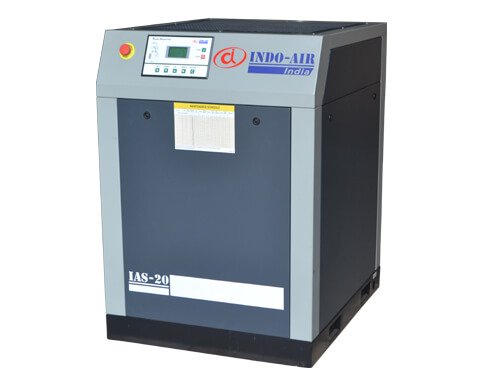Several manufacturing units require compressed air for various industrial procedures. The screw compressor is an efficient type of compressor which is capable of producing large volumes of compressed air with a small footprint. Recently the demand for screw compressors has considerably shot up. Screw compressor manufacturers in India will help you understand salient features and benefits of screw compressors. If you are planning to purchase one, here we have compiled all the necessary details about screw compressors which will help you select the right compressor for your facility.
What is a screw compressor?
Surprisingly, the screw element was invented long back in the 1930s. The screw compressor is one type of rotary compressor. It compresses air with screw operation. It contains male and female rotors. If it is an oil-injected technology, then the male motor will drive the female rotor. If it is an oil-free compressor technology, then both rotors will run together and there will be almost negligible calculated clearance between male and female rotors. To put it in simple words, in a screw compressor, male and female rotors rotate in opposite directions. Meanwhile, they draw air in between. The air progresses along with the rotors and when the volume space between the rotors decreases, the air is compressed. The compressor contains an outlet which displaces the compressed air. To avert mechanical loss, there is a provision to optimize the speed of the rotors. Sometimes due to the heat generated at high speed or air loss due to very low speed can result in mechanical loss. Screw compressors help reduce this loss.
In comparison to a piston compressor, screw compressors fit in less space. Most of the screw compressors neither have valves nor mechanical force. Due to this, they are more stable and capable of working at a high speed. Compared to a piston compressor, screw compressors can handle large flow rates. With the very little fluctuation in distribution pressure, it can supply constant air.
How does it work?
A screw compressor has a complex design. It has two screws that work as rotating elements. Apart from that, it has a suction and delivery valve. It also consists of one cover, one air filter and a rubber seal. Plastic or sand, dough or lime, silicate or cement, these compressors are capable of handling various types of dry material. As mentioned above, the two types of screws are known as female and male screws. Male screws are convex while female screws are made of concave inlets.
Parts other than male and female screws also play a crucial role in generating compressed air. The entry process starts when the screws begin to rotate. There is a space between two screws which is occupied by an inlet port. The air is filled in this port. The compression process takes place in the second phase. For compressing the air, it is important for the male thread to stop or block the female thread. As soon as this happens, the rotation of the screws reduces. The last phase is the exhaust phase. In this phase, screws do not interact with each other. After that, the volume reaches the compressor’s delivery outlet. The entire process is so reliable that many manufacturers have started using screw compressors for various applications. They are widely used in hydraulic power systems, electric motors, and stable and mobile applications.
What are the different types of screw compressors?
Gas Compressor: Rotary screw compressor is one type of gas compressor. Through a single screw or double-counter helical screw, it generates compressed air. When the system is active, gas is pulled through the port of the cover. After that, it is captured in a certain cave. Later, the gas is discharged for the second port in the cover. You can find such screw compressors on construction sites that have diesel-driven trailer units.
Oil-flooded Screw Compressor: Oil-flooded screw compressor is another type of screw compressor. It is widely used in sealing and cooling gas charging. In this system, the oil flows in the process. Before being cooled and filtered, oil passes separation from the discharge stream. After the process, the oil is recycled.
Oil-free Screw Compressor: In several industries, oil-free screw compressors are used. Without oil, screws generate compressed air. This type of screw compressor is widely used in medical research and semiconductor industries.

